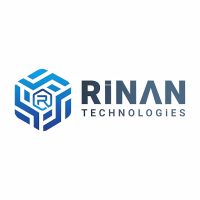Transforming Education with the Internet of Things (IoT)
Introduction:
In recent years, technological advancements have revolutionized various aspects of our lives, and education is no exception. One such advancement that has gained significant traction is the Internet of Things (IoT). The IoT refers to the network of interconnected devices and sensors that communicate and share data over the Internet. In the realm of education, IoT offers remarkable opportunities to enhance learning environments, streamline administrative tasks, and empower students and educators alike. This blog post explores the impact of IoT in education and the exciting possibilities it brings.
Enhancing Learning Environments:
IoT technology has the potential to transform traditional classrooms into smart learning environments. By integrating IoT devices and sensors, educational institutions can create an immersive and personalized learning experience for students. For instance, smart boards and interactive displays can facilitate collaborative learning, allowing students to interact with digital content in a more engaging and hands-on manner. IoT-enabled wearables, such as smartwatches, can track students’ physical activity levels and sleep patterns, promoting healthy habits and overall well-being.
IoT also enables the collection of real-time data on students’ progress and performance. For instance, connected devices can monitor students’ understanding of concepts and provide instant feedback, allowing educators to identify knowledge gaps and tailor their teaching accordingly. This data-driven approach helps educators make informed decisions to optimize learning outcomes and provide personalized support to students who need it most.
Streamlining Administrative Tasks:
Administrative tasks are an integral part of any educational institution, but they can often be time-consuming and tedious. IoT technology can streamline these tasks, allowing educators and administrators to focus more on teaching and student engagement. For example, connected devices can automate attendance tracking, reducing paperwork and saving valuable instructional time. Similarly, IoT-enabled systems can monitor and control energy usage in classrooms, leading to more efficient energy management and cost savings.
Furthermore, IoT devices can enhance campus security by providing real-time monitoring and alert systems. Connected surveillance cameras, motion sensors, and access control systems can ensure the safety of students and staff by detecting unauthorized access and alerting the appropriate authorities. By automating these processes, educational institutions can create a secure and conducive learning environment.
Empowering Students and Educators:
The IoT empowers both students and educators by providing them with tools and resources to enhance their educational journey. IoT devices can enable students to access educational content and resources from anywhere, anytime. For instance, e-books, online learning platforms, and educational apps can be accessed through connected devices, giving students the flexibility to learn at their own pace and convenience.
Educators, on the other hand, can leverage IoT technology to access a vast array of educational materials, lesson plans, and teaching aids. IoT devices can assist in content creation, classroom management, and assessment. For example, teachers can use IoT-enabled devices to gather real-time feedback from students during class discussions or use data analytics to evaluate student performance and adapt their teaching strategies accordingly.
Challenges and Considerations:
While the IoT offers tremendous potential in education, certain challenges and considerations need to be addressed. Privacy and security concerns are paramount when dealing with student data and personal information. Educational institutions must prioritize data protection measures, such as encryption and secure network infrastructure, to ensure the confidentiality and integrity of student information.
Moreover, the digital divide is a significant concern. Not all students have equal access to connected devices and high-speed internet, which can create disparities in educational opportunities. To harness the benefits of IoT in education, efforts must be made to bridge this gap and ensure equitable access to technology and connectivity for all students.
Conclusion:
The Internet of Things is reshaping the educational landscape, offering transformative possibilities for learning environments, administrative tasks, and the overall educational experience. By embracing IoT technology, educational institutions can create dynamic and personalized learning
environments, streamline administrative processes and empower students and educators alike. However, it is crucial to address privacy, security, and accessibility concerns to ensure that the benefits of IoT in education are accessible to all. With careful implementation and consideration, the IoT has the potential to revolutionize education and empower the learners of tomorrow.
By combining the appropriate technology, industry expertise, and strategic planning, we provide our clients with high-end quality solutions. In 2020, a well-known web development company in Jaipur was founded, and since then, it has provided web design services in Jaipur and all over the world that are superior to those of its competitors. We are an eCommerce development company in Jaipur that provides web development services in Jaipur. Websites built by Rinan Technologies, a Web design and development company in Jaipur, are skillfully made to advance your brand and effectively communicate your message.

